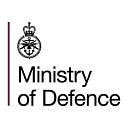
Operation KIPION explained: Protecting shipping lanes in the Gulf
The Royal Navy has been present in the Gulf for more than 30 years securing the safe flow of trade goods, here are three things you need to know about the deployment
Following the start of the Iran–Iraq War in September 1980, tensions were high in the region and a result the Gulf became an unstable and fragile area.
Since then, the Royal Navy and the Royal Fleet Auxiliary have been on patrol in the region 24 hours a day, seven days a week, 365 days a year.
Operation KIPION is the name given to the Royal Navy’s presence in the Gulf and Indian Ocean.
The protection that the Royal Navy and Royal Fleet Auxiliary give in the Gulf is pivotal. If the flow of ships and cargo in the region stops it will impact on everyone in the UK and more widely around the world.
Here are three things you need to know:
1. Why are we there?
In August 1980 through to 1988 a prolonged military conflict occurred between Iran and Iraq. The conflict at main was a large-scale ground-war, which resulted in many thousands of deaths on both sides.
But it was the naval aspect of that war which caused many of the issues that affect us to this day, in particular attacks on merchant shipping and oil tankers.
Many civilian seamen lost their lives and shipping vessels and oil tankers were damaged, causing large economic loss across the world.
The United Kingdom has enjoyed strong political, commercial and trading links in the Gulf region for decades, with 95% of Britain’s economic activity depending on the oceans.
Along with tension in the region, another legacy of the Iran–Iraq War is the large number of mines sown in and around the Gulf.
Promoting peace and security in the region helps to ensure the safe flow of oil and trade.

2. What is the Royal Navy doing?
The UK has a long-standing maritime presence in the Gulf and the Indian Ocean.
There are two elements to Operation KIPION. The protection and escorting of shipping vessels and tankers, and the Mine Countermeasures squadron.
Ensuring safe passage
There is typically at least one escort supported by a tanker of the Royal Fleet Auxiliary, which is employed by UK Maritime Component Command (UKMCC) on Maritime Security patrol.
Plus a four-strong squadron of minehunters with a Royal Fleet Auxiliary support ship at notice within the operational area.
The United Kingdom Component Command, located in Bahrain, is the command element of Operation KIPION.
The UKMCC exercises command and control of the various Royal Navy and Royal Fleet Auxiliary ships in the region.
Ensuring the free flow of international commerce is the Royal Navy’s top priority. It does this through the three principles of the mission: vigilance, surveillance and assurance.

Mine Countermeasures squadron
With the legacy of mines from the Iran-Iraq war, the Royal Navy mine countermeasures vessels are permanently stationed in the area.
Royal Navy mine counter-measure vessels provide and exercise the capability to conduct route survey, sea-bed clearance, and mine clearance operations all over the Gulf.
The Operation KIPION Mine Countermeasures squadron is made up of two Hunt-class mine countermeasures vessels and two Sandown-class minehunters.
Together, these four ships patrol the Gulf. Seeking out and, if necessary, destroying unexploded sea mines, using highly trained Mine Clearance Divers and the SeaFox unmanned mine disposal system.
The squadron is capable of operating both independently and as part of a multinational force.
Their ultimate aim is to ensure that the vital trade routes of the Middle East are kept open for business, maintaining the flow of global maritime trade.

The Royal Navy is at the forefront of mine countermeasure capabilities in experience, expertise and technology.
It is important that we maintain these skills across a range of different environments, including the warm shallow waters of the Gulf.
3. Who is the UKMCC?
The UK Maritime Component Command (UKMCC), located in Bahrain, is the command element of Operation KIPION. Bahrain is also home to Combined Maritime Forces (CMF),
The UKMCC exercises command and control of the various Royal Navy and Royal Fleet Auxiliary ships in the region.
The role of the Royal Navy in Bahrain is key to the operational activity in the area, with ships from the UK and other nations from across the world operating and transiting in and around the region.
Information and commands are vital to allow the smooth sailing on operations.
